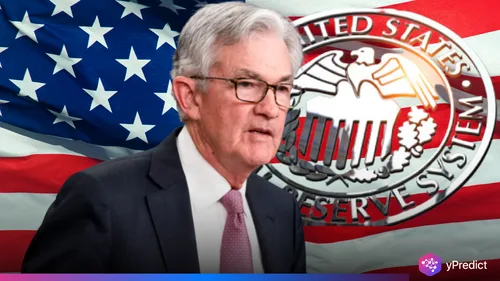
The oil prices surged on Friday after China signaled that they were willing to resume trade negotiations with the US, boosting investor confidence and relieving fears about ongoing geopolitical tensions. Brent futures climbed 49 cents to $82.62 per barrel and US West Texas Intermediate (WTI) was up 50 cents at $79.74.
The market reacted positively to the prospect of fresh talks between the two economic powers, which might boost global trade dynamics. The increase in prices also indicates broader optimism about global demand, which contributes to a more positive outlook for commodity markets and overall economic stability.
Trade Reconciliation Fuels Market Sentiment
Reuters reports that global oil prices saw a modest rise on Friday as investor sentiment improved following reports that China may be willing to resume trade talks with the United States. This possible improvement in relations between the two nations has revived traders’ enthusiasm after weeks of instability.
In a statement released on Thursday night, the Chinese Ministry of Commerce said that Beijing is “open to constructive dialogue” with the United States over ongoing trade tensions. It further read that
Senior US officials have repeatedly expressed their willingness to negotiate with China on tariffs. At the same time, the US has recently sent messages to China through relevant parties, hoping to start talks with China. China is currently evaluating this.
The announcement comes as both sides face increasing economic pressures and marks a potential de-escalation in a war that has weighed significantly on global trade flows since 2018.
The prospect of resumed communication boosted oil prices, which had been under pressure due to growing concerns about a possible worldwide economic slowdown. Experts have repeatedly warned that a prolonged trade war might push the global economy closer to recession, reducing demand for crude oil.
These concerns are growing deeper as the OPEC+ coalition prepares to increase supply, troubling the market outlook.
Broader Geopolitical Factors at Play
Apart from the developments in the trade talks between the US and China, growing concerns about Iranian crude further increased the oil prices. After delaying nuclear negotiations with Tehran, President Trump reiterated threats to sanction companies that buy Iranian oil, tightening the US “maximum pressure” campaign.
As per a report by ANZ Bank, the risk of secondary sanctions is likely to discourage some buyers from dealing with Iranian oil, tightening the supply outlook further.
Additionally, according to a report from Reuters, the OPEC+ coalition is set to convene on May 5, where representatives from eight member countries will discuss the production strategy for the upcoming quarter.
While Saudi Arabia has informed its allies and industry experts that it is not inclined to support higher oil prices through additional production cuts, several other nations in the alliance are calling for a more proactive approach.
In a recent research note, Fitch’s BMI unit highlighted,
With non-OPEC+ supply rising robustly and global demand growth facing structural decline, we see no natural re-entry point for these barrels and, ultimately, the group will likely have to endure some price pain no matter when it unwinds its cuts.
Careful Optimism Ahead
While markets have responded positively to China’s willingness to resume trade talks, analysts warn against being overly optimistic. Previous agreements have produced few long-term results, and both parties’ strategic interests remain in conflict. However, the revived conversation provides an appearance of stability in an otherwise unstable trade market.
The result of the next trade discussions, together with OPEC+ decisions and prevalent geopolitical concerns, will determine whether this rebound has long-term consequences or is fleeting. For the time being, the global economy is on the verge of a potential trade and energy paradigm shift.







